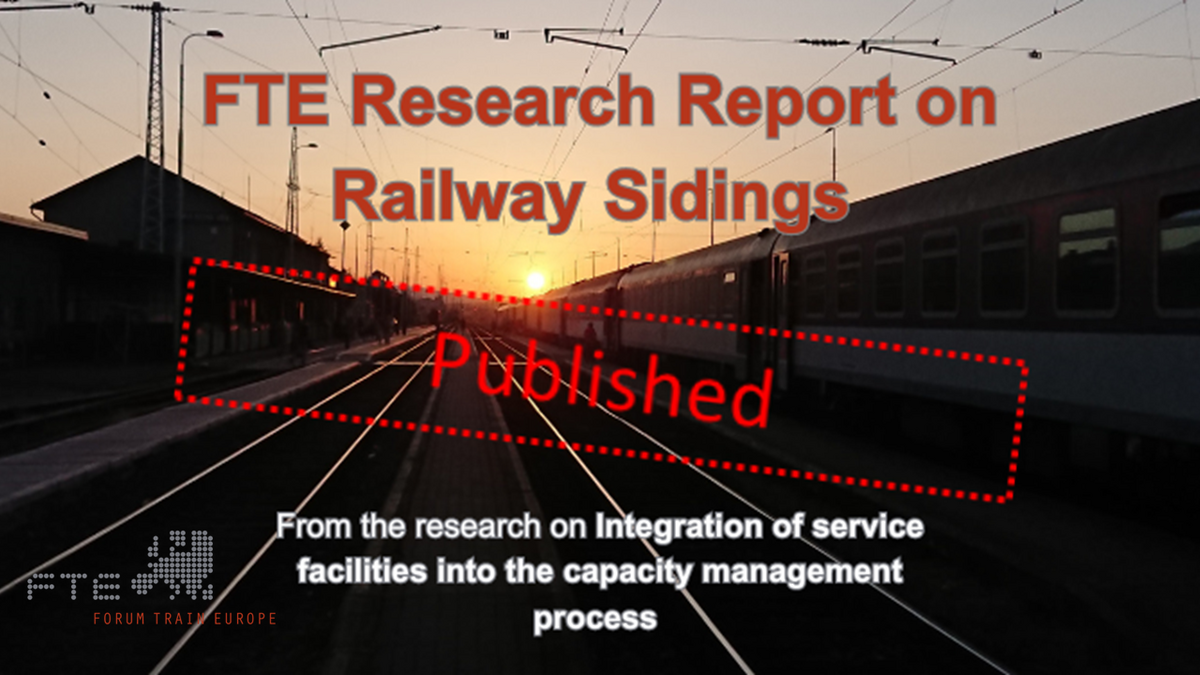FTE has published the first comprehensive report as part of the ongoing research on service facilities, and their integration into the capacity management process. The first report covers the storage sidings, railway tracks (including run-through ones) that are used to park both freight and passenger trains. The report confirms that the alignment is far from the state-of-the-art with national practices significantly varying. The report also suggests several best practices and lists railway market needs that must be considered in the sector standardisation to improve competitiveness.
Rail connected facilities (hereafter service facilities) are a broad yet crucial category of railway infrastructure. With each train path and train movement, there is always an associated need for one or multiple types of service facilities. This can include a slot at a station, a spot to store the train, access to a freight terminal for loading or unloading goods, service at a maintenance facility, among others. When rail capacity management processes do not sufficiently integrate service facilities (and consider the whole logistic chain) it negatively affects the running of the train, the loss is ultimately borne by the Railway Undertakings (RUs). For RUs and their customers, this means delays, cancelled trains, irregular service, loss of profits, higher administrative burden, and in the end the lower competitiveness of rail compared to trucks and buses for freight and passengers.
Service Facilities are currently not well integrated and aligned with the rail capacity management processes and thus pose many challenges that have not been sufficiently addressed by the railway sector, with most of the consequences of inaction falling on RUs. Therefore, in 2023, the FTE members initiated research to map the gaps and best practices, to support the sectoral standardisation which reflects the market needs, and this has been recognised by the European Commission and reflected in the proposed new Regulation 443 on the Use of Rail Infrastructure in 2023, which envisages deeper alignment and standardisation. In case the Regulation enters in force with these provisions, the sector will have to come up with the process and IT standards for the whole Europe, and this is where FTE and its members are preparing a solid ground with the research for the future discussions of RUs, IMs and Regulatory Bodies.
The first comprehensive research report, which we publish focuses on storage sidings (hereafter sidings). The report explores in detail:
- The issue of precisely defining parking and a siding (e.g. station run-through track?);
- Lack of consideration for RUs' needs in the long-term sidings’ availability and capacity;
- Ensuring up-to-date information about the sidings and their occupancy is essential. Outdated or incomplete data leads to inefficient informal communication via phones and emails for IMs and RUs. Therefore, digitalisation, effective IT tools, and the obligation to keep data updated are necessary.
- Missing link between Temporary Capacity Restrictions (TCRs) on lines and sidings (incl. TCR in sidings), with coordination and sometimes even extra charges left on RUs’ shoulders;
- Not all siding operators can fulfill the same obligations, especially the smaller ones;
- Missing alignment between rail path and sidings allocation, an untransparent black-box process during the allocation which would need higher transparency, good coordination in case of conflicts and allocation principles of last resort, preferably not auctions.
- The fact that the siding is allocated (or leased) should not be a blocking point to request it. The best practice is that the IM or service facility checks with the leaseholder if the siding would really be occupied at the requested time or can be sub-leased.
- Sidings should also be included in the multi-annual instruments (Framework Agreements and Rolling Planning)
The draft report (research to be continued) can be downloaded here.
For more information about the FTE work in the area of Service facilities, check the dedicated webpage.
The FTE office and FTE members would like to express special thanks to Giuseppe Miccoli, who had joined FTE office and conducted stakeholder interviews and analysed many relevant resources.
